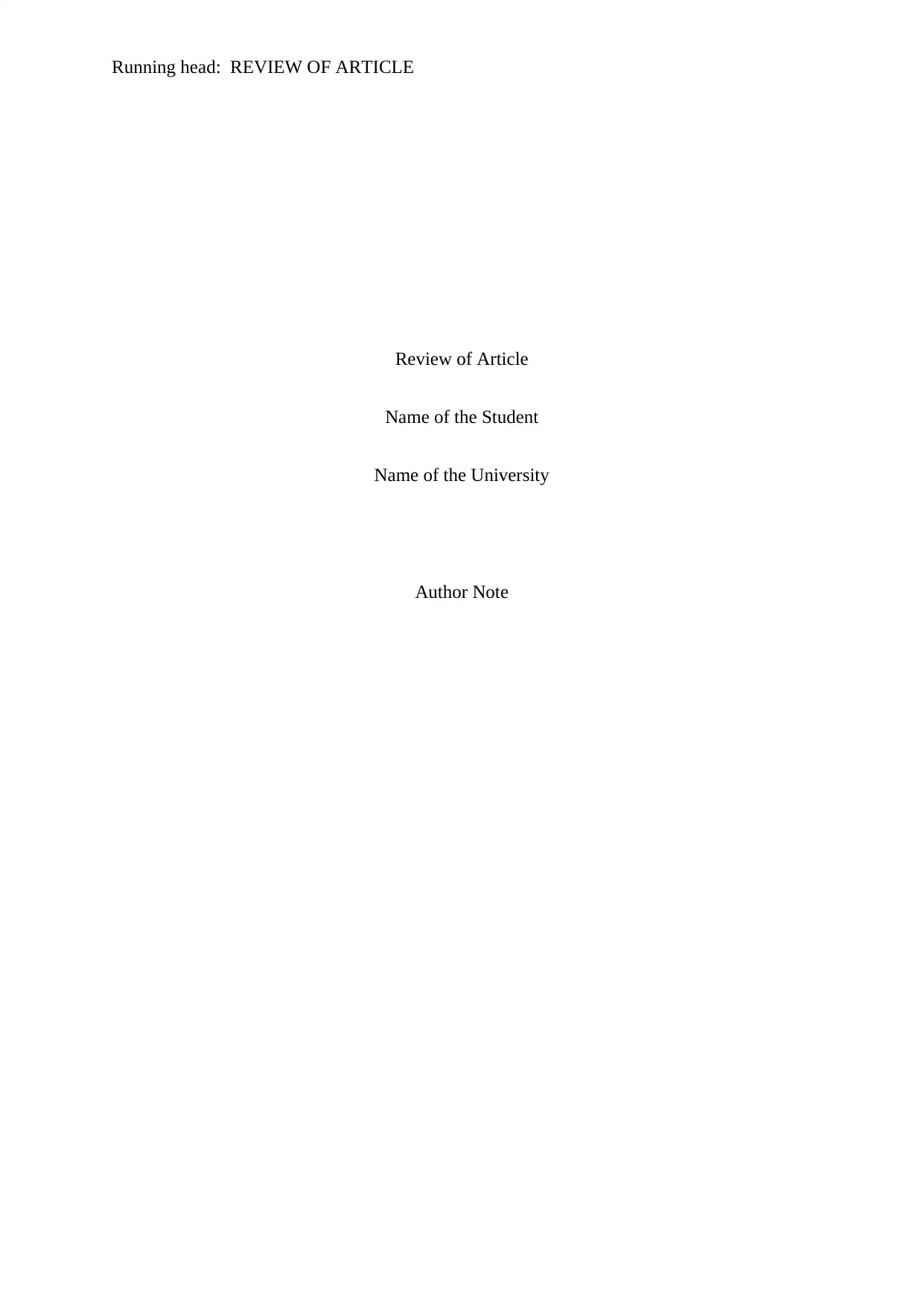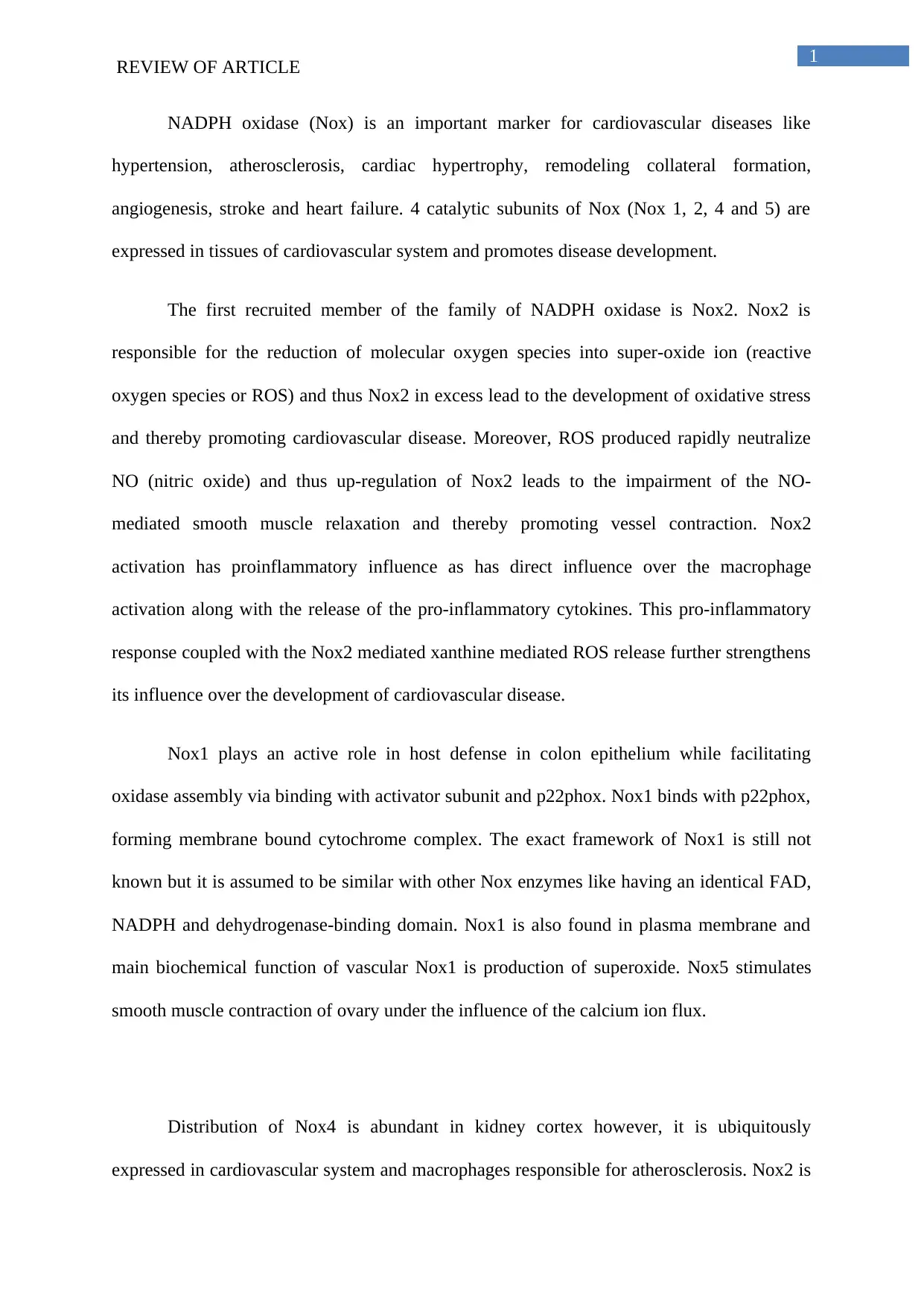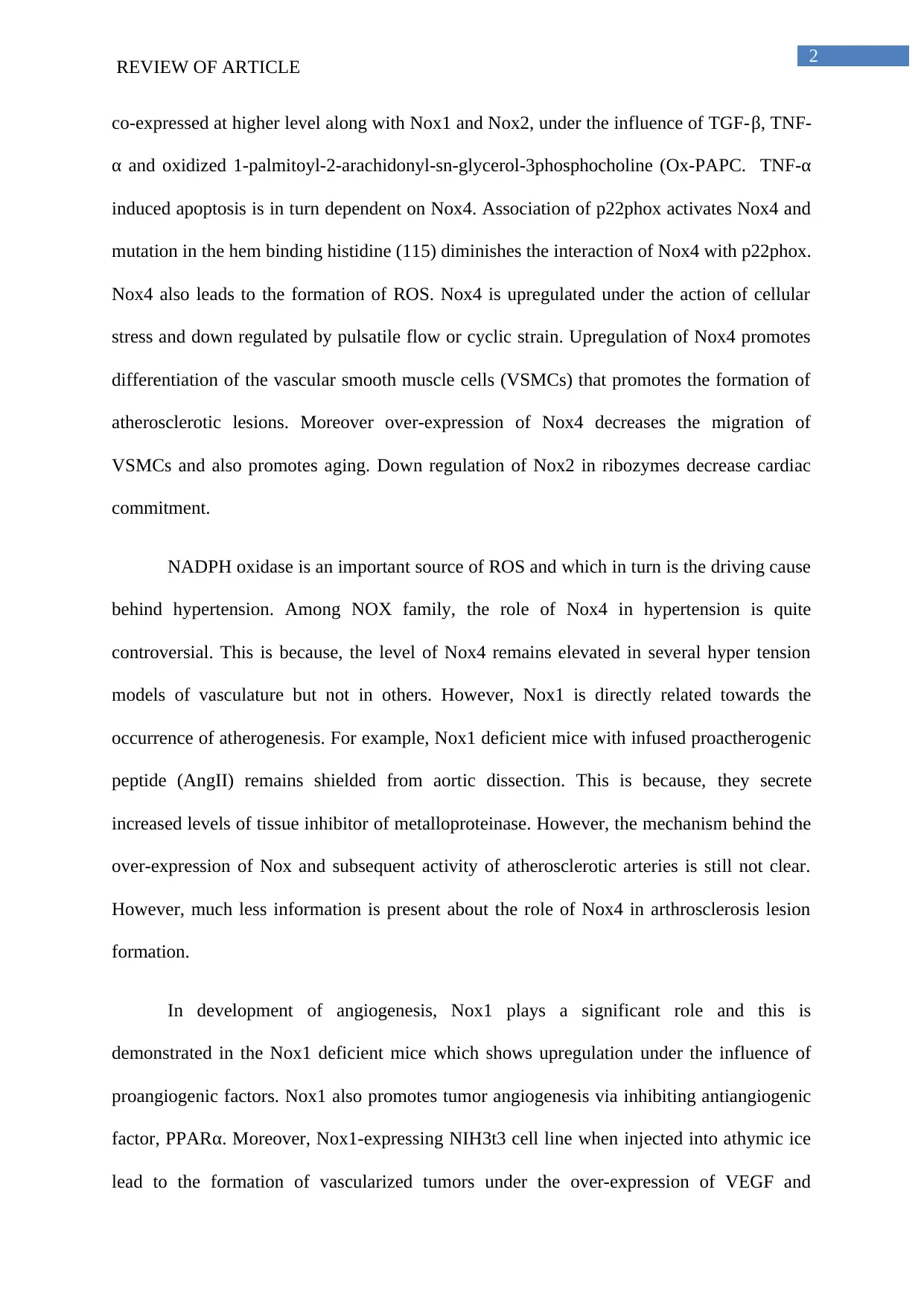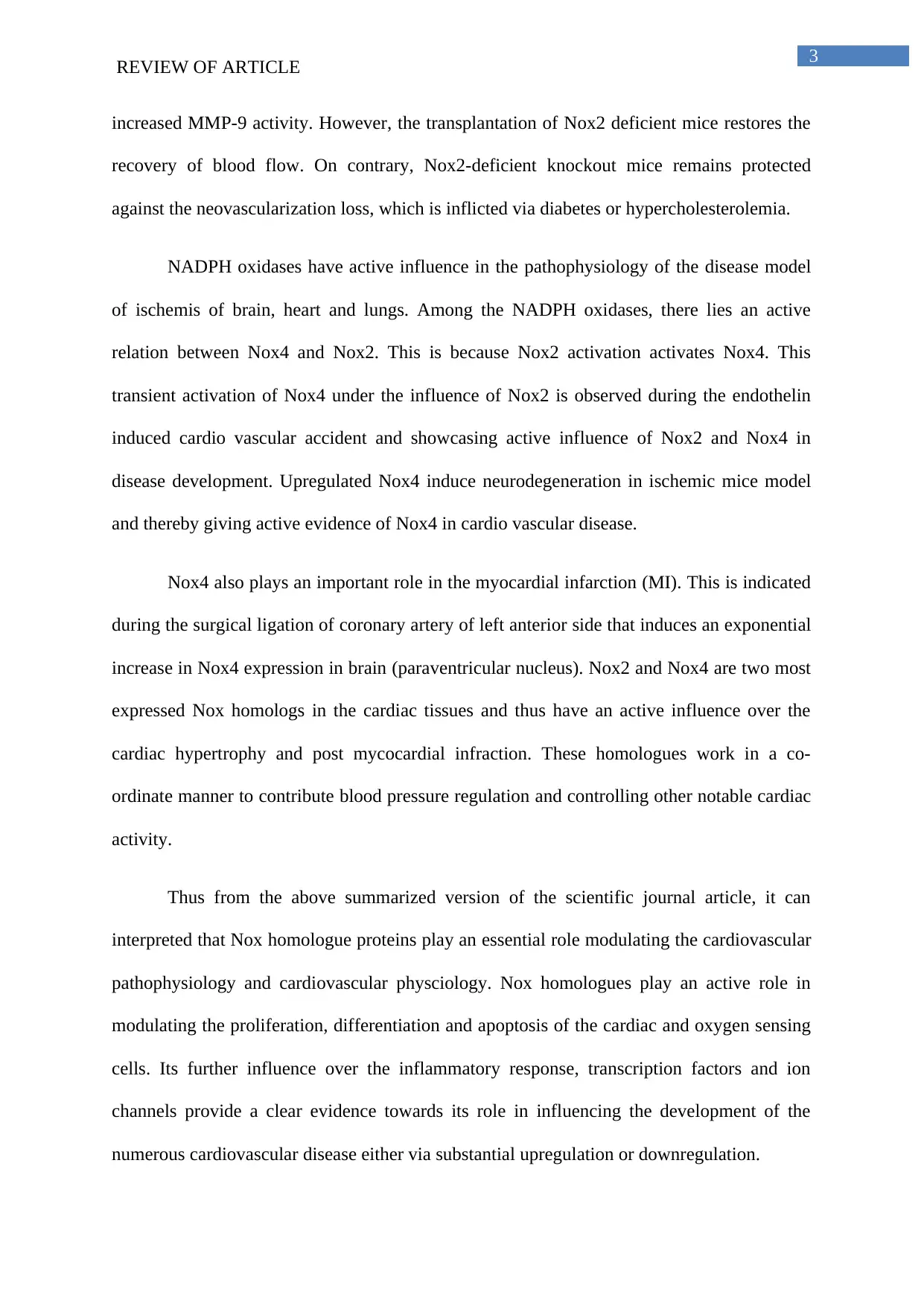University Article Review: NADPH Oxidase and Cardiovascular Pathology
VerifiedAdded on 2020/05/16
|5
|980
|69
Report
AI Summary
This report reviews a scientific journal article that explores the role of NADPH oxidase (Nox) family members, specifically Nox1, Nox2, Nox4, and Nox5, in the pathophysiology of various cardiovascular diseases. The article highlights how these Nox enzymes, particularly Nox2 and Nox4, contribute to oxidative stress, inflammation, and vascular dysfunction, leading to conditions like hypertension, atherosclerosis, cardiac hypertrophy, and heart failure. It details the mechanisms by which Nox enzymes influence smooth muscle contraction, macrophage activation, and angiogenesis. The review also discusses the controversial role of Nox4 in hypertension and the protective effects observed in Nox1-deficient mice. Furthermore, the report emphasizes the involvement of Nox enzymes in ischemic models of brain, heart, and lungs, including myocardial infarction and neurodegeneration, underscoring their critical role in modulating cardiovascular physiology and pathology by influencing cell proliferation, differentiation, apoptosis, and inflammatory responses. The overall conclusion emphasizes the importance of understanding Nox homologues for developing therapeutic strategies for cardiovascular diseases.
1 out of 5








![[object Object]](/_next/static/media/star-bottom.7253800d.svg)